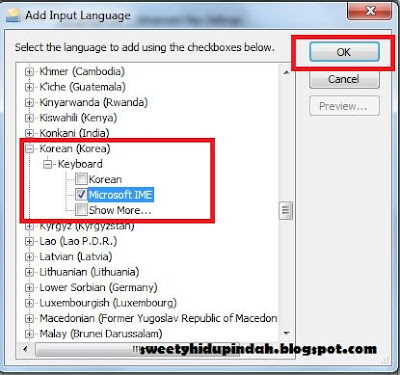Regarding the parts of the body, we can ask these two question ; What is this? and Where does it hurts?
Q : 어디가 아파요 ? | eodiga apayo? | Where does it hurts?
A : _____가 아파요. | ___ga apayo. | My____ hurts.
Q : 이것이 뭐예요 ? | igesshi moeyeyo? | What is this?
A :_______ 예요. / | ______ yeyo. | It is ______
______ 이예요. | ______ iyeyo. | It is ______
You has to replace the line with a part of the body. You can also see that there is two answers for the second question. That is called a subject particle. When the subject end with a consonant, you should add 이 after the subject. If the subject end with a vowel, you don't need to add 이.
For example :
Q : 이것이 뭐예요 ? Q : 이것이 뭐예요 ?Here are the parts of the body that you need to remember.
A : 머리 예요. A : 눈이예요.
Boby Parts English Hangul Pronunciation body 몸 mom head 머리 meori hair 머리카락 meorikarak face 얼굴 eolgul forehead 이마 ima eye 눈 nun eyebrow 눈썹 nunsseop eyelid 눈꺼풀 nunkkeopul eyelashes 속눈썹 songnunsseop ear 귀 gwi cheek 볼 bol nose 코 ko nostrils 콧구멍 kogumeong mouth 입 ip lips 입술 ipsul tongue 혀 hyeo neck 목 mok nape of the neck 목덜미 mokdeolmi throat 목구멍 mokgumeong tooth 이 i gum 잇몸 inmom chin 턱 teok shoulder 어깨 eokkae arm 팔 pal wrist 팔목 palmok elbow 팔꿈치 palkkumchi hand 손 son wrist 손목 sonmok palm of the hand 손바닥 sonbadak fist 주먹 jumeok finger 손가락 songarak thumb 엄지 eomji index finger 검지 geomji ring finger 약지 yakji fingernail 손톱 sontop breast 가슴 gaseum breast 유방 yubang armpit 겨드랑이 gyeodeurangi side 옆구리 yeopguri back 등 deung waist 허리 heori abdomen 배 bae navel 배꼽 baekkop buttocks 엉덩이 eongdeongi leg 다리 dari thigh 허벅지 heobeokji knee 무릎 mureup foot 발 bal ankle 발목 balmok toenail 발톱 baltop heel 뒤꿈치 dwikkumchi skin 살갗 salgat muscles 근육 geunyuk bone 뼈 ppyeo
Internal Organs English Hangul Pronunciation heart 심장 simjang liver 간 gan lungs 폐 pye stomach 위 wi appendix 맹장 maengjang kidney 콩팥 kongpat pancreas 췌장 chwejang gall 담낭 damnang bowels 장 jang womb 자궁 jagung brain 뇌 noe anus 항문 hangmun
Other English Hangul Pronunciation mustache 수염 suyeom dimple 보조개 bojogae
You can also learn by watching this video
or by this video. It is the Head, Shoulder, Knee and Toes song in Korea.

















2.jpg)